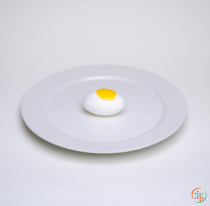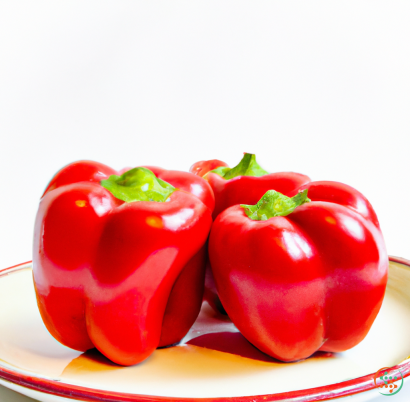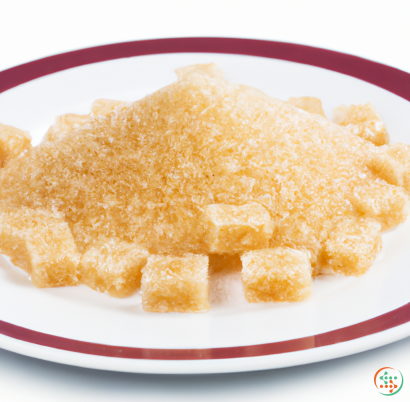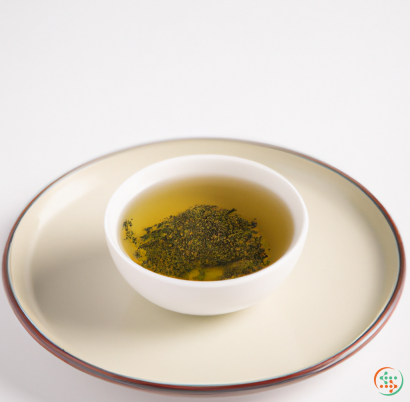Persimmons
If you’ve never heard of the exotic persimmon—also called the Japanese plum—you’re in for a treat. This highly valued and beloved fruit has a long and storied history that stretches across centuries and multiple cultures. From its health benefits to its surprisingly versatile culinary uses, let’s take a closer look at the persimmon.
Origins of the Persimmon
The persimmon is believed to have first been cultivated in China over two thousand years ago, likely as a decorative tree in ornamental gardens. The fruit was first mentioned in literature during the Tang Dynasty, around 618 A.D. Eventually, settlers in Japan began cultivating the fruit to produce sweeter, more flavorful varieties. In the United States, persimmons have been grown by Native American tribes in the southeast since before the American Revolution.
Nutritional Benefits
The persimmon is a nutritional powerhouse, offering a wealth of vitamins and minerals in each serving. They contain high levels of Vitamin A and Vitamin C, as well as essential minerals such as calcium and potassium. Probably most impressive are the antioxidant compounds, which can help protect the body from cellular damage caused by free radicals. The most prominent antioxidant, ?-carotene, can be found in large amounts in the skin of ripe persimmons. Persimmons are also a good source of dietary fiber, containing over 6 grams per medium fruit.
Varieties
Due to their long history of cultivation, there are many different varieties of persimmons. In China, the most popular is the Hachiya, which is shaped like an acorn and must be ripe before it can be eaten. It is light orange in color when ripe and has a sweet yet tart flavor. Other popular varieties in China include the Fuyu, which is rounder and slightly more orange; the Magino, which is heart-shaped and bright orange when ripe; and the Tanenashi, which is sour and is most often eaten in jams and preserves.
In Japan, the popular varieties are the Osaka and Ichikikijiro, both of which have a sweet and juicy flavor. The uri variety is the most widely produced in Japan, and it is popular for its crunchy texture. In America, the most popular variety is the Fuyu, which is used for a variety of culinary applications.
Culinary Uses
Persimmons are extremely versatile and can be used in a variety of ways in the kitchen. Raw persimmons can be eaten as fruit or added to salads or smoothies. They can also be cooked in a myriad of ways, including baking, roasting, grilling, or frying.
When cooked, persimmons add a unique touch of sweetness and texture to dishes. Baked goods such as cakes and pies typically benefit from their addition. They can also be used to make jams, jellies, and syrups. Persimmons are popularly used in Asian cuisine, such as in sushi and sashimi platters. They can also be added to soups or stews in order to add depth of flavor.
Conclusion
The persimmon is a flavorful and nutritious fruit with a long history of cultivation and popularity. From its origins in China two thousand years ago to its various culinary usages in modern times, it is a beloved fruit around the world. With its high levels of vitamins, minerals, and antioxidants, the persimmon is a valuable addition to any diet. The next time you’re at the grocery store, give this exotic fruit a try and discover for yourself why it is so beloved!
Introduction
From field to plate, the journey of a persimmon to your dinner plate is a fascinating and complex process that requires a lot of processes, people, and time. A persimmon is a true product of Mother Nature, requiring careful cultivation and harvesting in order to reach its unparalleled level of sweetness and juiciness. In this blog post, we’ll explore the many steps and people involved in getting a persimmon to your plate.
Step 1: Growing the Persimmon
The first step in getting a persimmon to your plate is growing the fruit itself. Persimmons are most commonly grown on small, family-owned farms or in large commercial orchards. The trees can live for many years and outlive the individuals who planted them.
These trees need a lot of care and attention to ensure that they produce the sweet and juicy persimmons that we’re all familiar with. First, the farmer needs to select the right variety of persimmon tree. Depending on their local climate, they’ll need to choose a cultivar that’s able to grow in their region. The tree is then carefully planted and monitored to make sure they’re getting enough water and nutrients.
Once the tree has reached the correct maturity, farmers then need to be vigilant about fruit thinning and pollination. Fruit thinning is the process of removing excess fruit before it matures so that the remaining fruit will grow larger and be of higher quality. This is important for commercial orchards where aesthetics and size are important. In addition, the trees must be properly pollinated to ensure that the fruit will grow in plentiful numbers and reach optimal sweetness.
Step 2: Harvesting the Persimmon
Once the persimmons have fully grown, the farmer then needs to harvest them. Depending on the size of the farm, this can involve both manual and machine harvesting. On a small-scale farm, the farmer will often pick the persimmons by hand. This can involve using a ladder to reach higher branches and baskets to carry the fruit.
In a larger commercial orchard, the persimmon harvest will usually involve the use of mechanical harvesting machines. These machines are designed to pluck the fruit off the tree quickly and efficiently. The harvested fruit is then placed into large baskets, crates, or pallets before being transported to the packing house.
Step 3: Transporting the Persimmon
Once the fruit is harvested, it then needs to be transported to the packing house, which is usually located at the farm itself. As with the harvesting process, the transportation can involve manual or machine-driven processes. For smaller farms, the farmer will often transport the fruit using a truck or trailer. For larger orchards, a fleet of trucks or specialized equipment such as a conveyor belt may be needed for transportation.
When transporting the fruit, the farmer must take extra care to ensure that the fruit is not damaged during the journey. The fruit should be handled gently and kept insulated as much as possible during transit to maintain its quality.
Step 4: Packing the Persimmon
Once the fruit has arrived at the packing house, it must be carefully examined, sorted, and packed for shipment. All of this is done in a very short span of time so that the fruit can reach its destination in peak condition.
Packers carefully inspect each piece of fruit for any damage and discard any fruit that isn’t up to their standards. The fruit is then sorted by size and quality, with the best pieces being reserved for premium packaging. Once the sorting process is complete, the fruit is then placed into carefully crafted boxes and pallets for shipping.
Step 5: Shipping the Persimmon
Once the fruit is packaged, it must then be shipped to its final destination. Depending on the size of the shipment, it might be sent via air freight, sea freight, or ground transport. The fruit must be properly insulated and, if possible, placed in a climate-controlled container to ensure the fruit’s quality is maintained during transit.
Once the persimmons have arrived at their destination, they must then be inspected once again to make sure that they’re still in good condition. They’re then ready to be sold at the local market or shipped directly to the consumer.
Step 6: Eating the Persimmon
Finally, once the persimmons have made it to the consumer, it’s time for the fun part – eating them! Persimmons are delicious when eaten raw or cooked in various dishes. Raw persimmons are sweet and juicy and make a great snack. They can also be used in salads, smoothies, desserts, and more.
Persimmons can also be cooked in a variety of dishes. They make a great accompaniment to savory dishes, like risotto or stir fries. Or, they can be roasted, grilled, or poached for a sweet and delicious dessert. No matter how you enjoy them, persimmons are sure to bring a tasty and healthy treat to the dinner table.
Conclusion
The journey of a persimmon from field to plate is a long and complex one. It requires a team of farmers, packers, and shipping companies that work together to ensure that the fruit reaches its destination in peak condition. However, the end result is worth it – a delicious, sweet, and juicy persimmon that’s sure to satisfy anyone’s taste buds. So the next time you bite into a persimmon, remember all the steps and people it took to get there.
| Vitamin C | 0.066 grams |
| Calcium | 0.027 grams |
Daily Value 1.3 g
|
| Iron | 0.0025 grams |
Daily Value 0.018 g
|
| Phosphorus | 0.026 grams |
Daily Value 1.25 g
|
| Potassium | 0.31 grams |
Daily Value 4.7 g
|
| Sodium | 0.001 grams |
Daily Value 2.3 g
|
| Tryptophan | 0.014 grams | |
| Threonine | 0.041 grams | |
| Isoleucine | 0.035 grams | |
| Leucine | 0.058 grams | |
| Lysine | 0.045 grams | |
| Methionine | 0.007 grams | |
| Cystine | 0.018 grams | |
| Phenylalanine | 0.036 grams | |
| Tyrosine | 0.023 grams | |
| Valine | 0.042 grams | |
| Arginine | 0.034 grams | |
| Histidine | 0.016 grams | |
| Alanine | 0.039 grams | |
| Aspartic Acid | 0.079 grams | |
| Glutamic Acid | 0.104 grams | |
| Glycine | 0.035 grams | |
| Proline | 0.031 grams | |
| Serine | 0.031 grams |
| Total Sugars | 0.131141 grams |
per 100g
|







